Waters Edge is Featured in The Times.
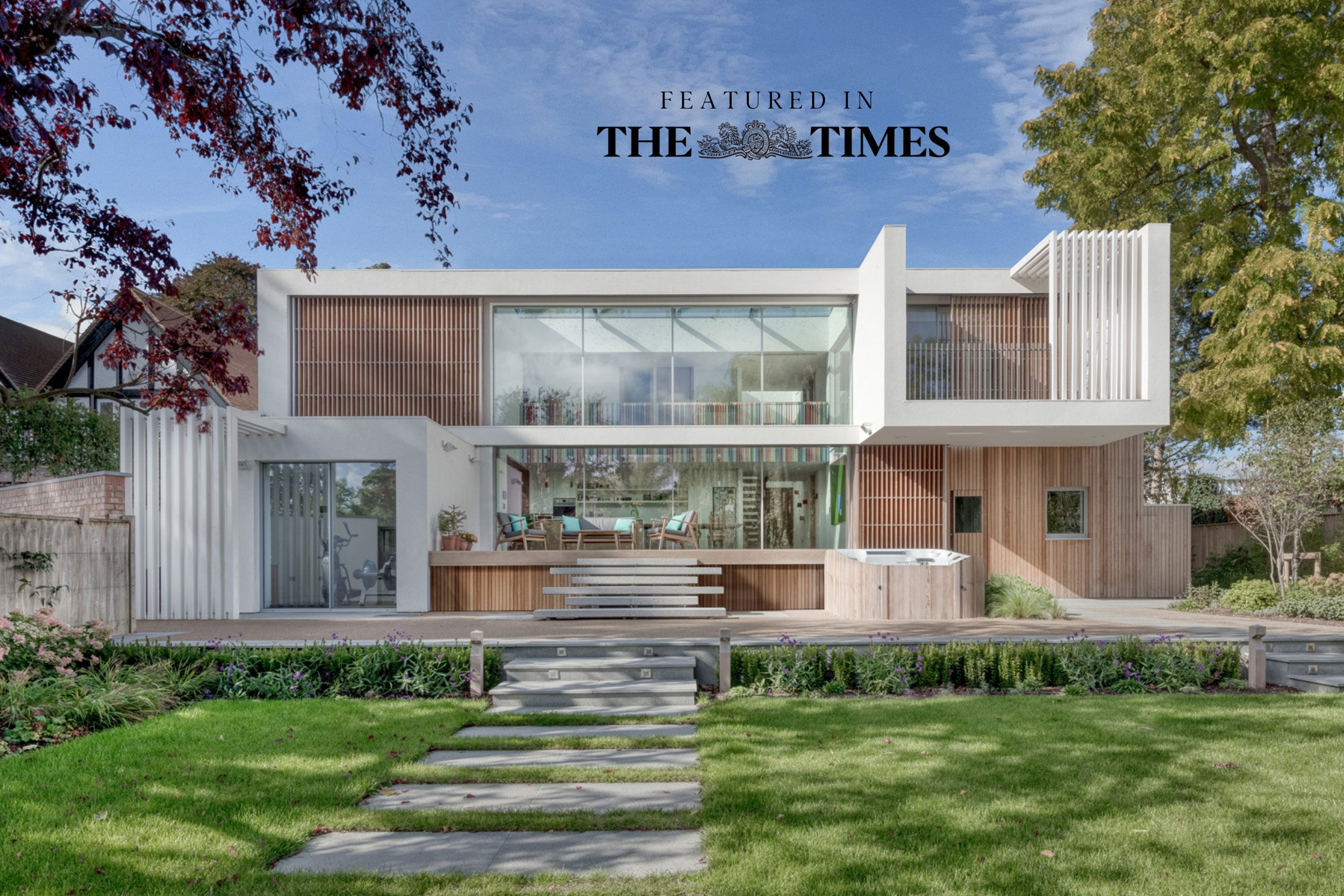
Award-winning property journalist Ruth Bloomfield covers the story of Water’s Edge in The Times, writing “… how this Berkshire house harvests and reuses its own rainwater… ingenious schemes such as this are exactly what Britain needs right now.”
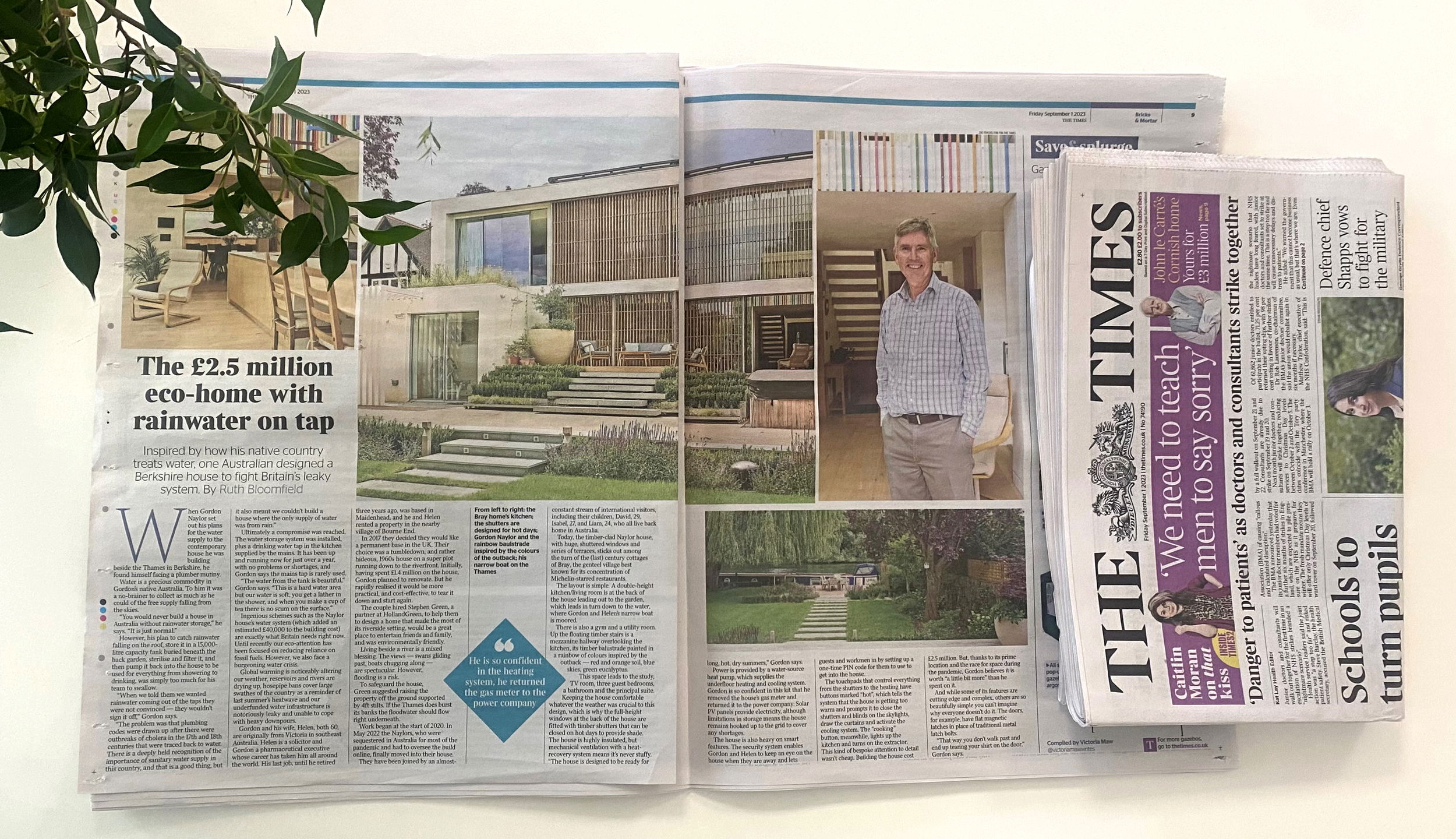
Below written by Ruth Bloomfield and featured in The Times. Link to The Times’ article here.
When Gordon Naylor set out his plans for the water supply to the contemporary house he was building beside the Thames in Berkshire, he found himself facing a plumber mutiny.
Water is a precious commodity in Gordon’s native Australia. To him it was a no-brainer to collect as much as he could of the free supply falling from the skies. “You would never build a house in Australia without rainwater storage,” he says. “It is just normal.”
However, his plan to catch rainwater falling on the roof, store it in a 15,000-litre capacity tank buried beneath the back garden, sterilise and filter it, and then pump it back into the house to be used for everything from showering to drinking was too much for his team to swallow.
“When we told them we wanted rainwater coming out of the taps they were not convinced — they wouldn’t sign it off,” Gordon says.
“The problem was that plumbing codes were drawn up after there were outbreaks of cholera in the 17th and 18th centuries that were traced back to water. There is a deeply held recognition of the importance of sanitary water supply in this country, and that is a good thing, but it also meant we couldn’t build a house where the only supply of water was from rain.”
Ultimately a compromise was reached. The water storage system was installed, plus a drinking water tap in the kitchen supplied by the mains. It has been up and running now for just over a year, with no problems or shortages, and Gordon says the mains tap is rarely used.
“The water from the tank is beautiful,” Gordon says. “This is a hard water area but our water is soft, you get a lather in the shower, and when you make a cup of tea there is no scum on the surface.”
“Ingenious schemes like Water’s Edge are exactly what Britain needs right now.”
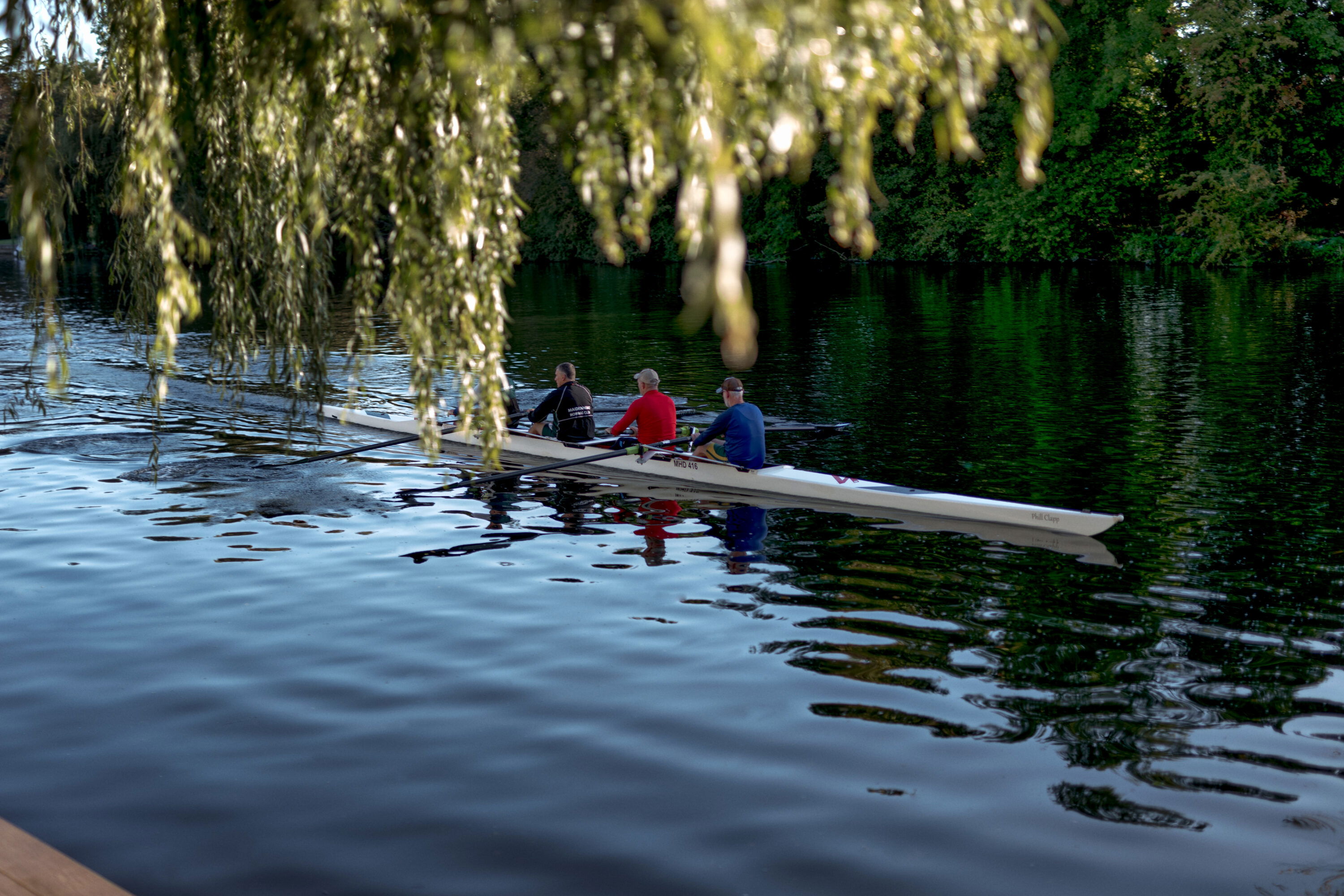
Ingenious schemes such as the Naylor house’s water system (which added an estimated £40,000 to the building cost) are exactly what Britain needs right now. Until recently our eco-attention has been focused on reducing reliance on fossil fuels. However, we also face a burgeoning water crisis. Global warming is noticeably altering our weather, reservoirs and rivers are drying up, hosepipe bans cover large swathes of the country as a reminder of last summer’s heatwave, and our underfunded water infrastructure is notoriously leaky and unable to cope with heavy downpours.
Gordon and his wife, Helen, both 60, are originally from Victoria in southeast Australia. Helen is a solicitor and Gordon a pharmaceutical executive whose career has taken him all around the world. His last job, until he retired three years ago, was based in Maidenhead, and he and Helen rented a home in the nearby village of Bourne End.
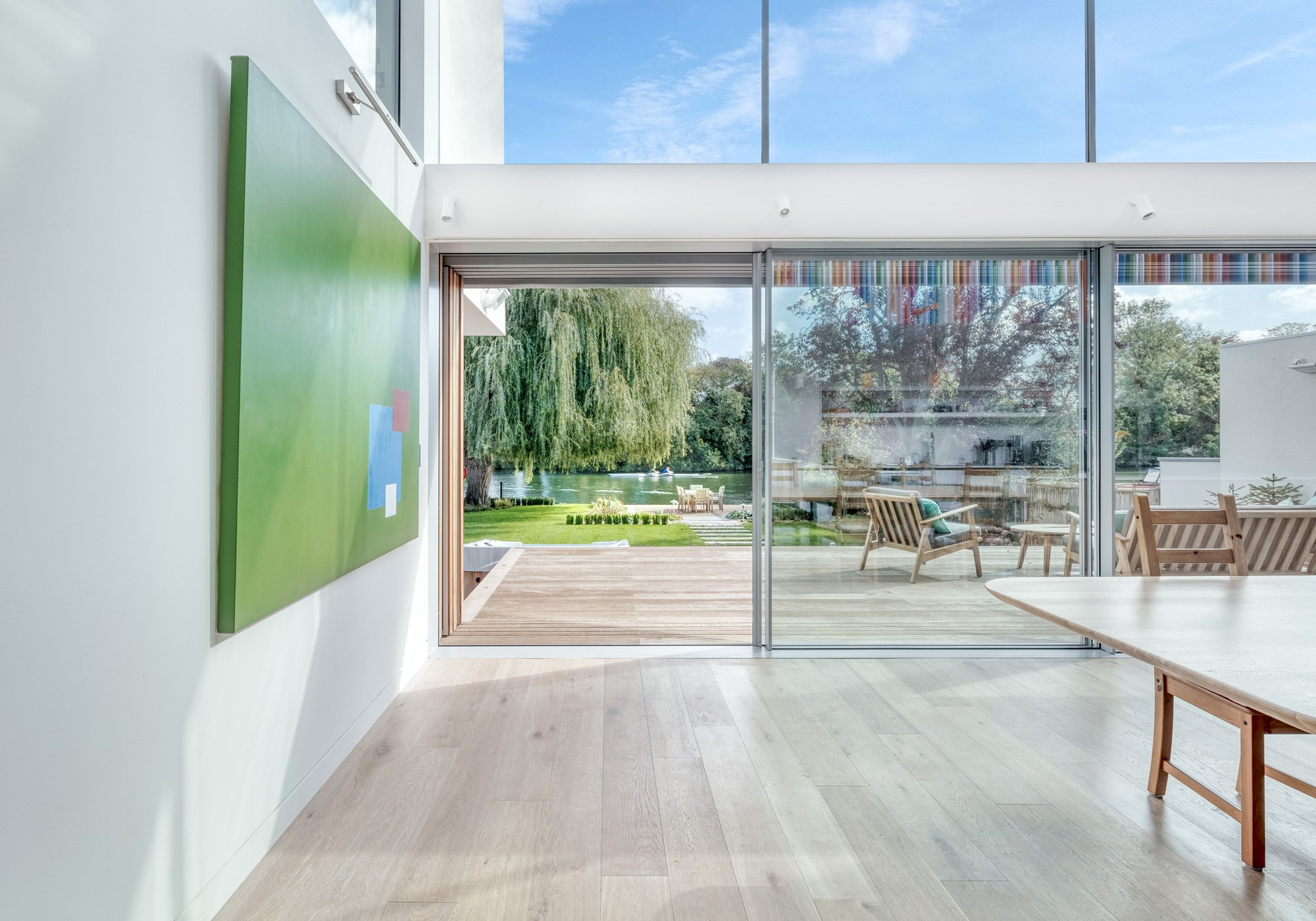
“The couple hired HollandGreen to design a home that made the most of its riverside setting, would be a great place to entertain friends and family, and was environmentally friendly.”
In 2017 they decided they would like a permanent base in the UK. Their choice was a tumbledown, and rather hideous, 1960s house on a super plot running down to the riverfront. Initially, having spent £1.4 million on the house, Gordon planned to renovate. But he rapidly realised it would be more practical, and cost-effective, to tear it down and start again.
The couple hired Stephen Green, a partner at HollandGreen, to help them to design a home that made the most of its riverside setting, would be a great place to entertain friends and family, and was environmentally friendly.
Living beside a river is a mixed blessing. The views — swans gliding past, boats chugging along — are spectacular. However, flooding is a risk.
To safeguard the house, Green suggested raising the property off the ground supported by 4ft stilts. If the Thames does burst its banks the floodwater should flow right underneath.
“Living beside a river is a mixed blessing. The views- swans gliding past, boats chugging along – are spectacular. However, flooding is a risk. To safeguard the house, Stephen Green suggested raising the property off the ground supported by 4ft stilts. If the Thames does burst it’s banks the floodwater should flow right underneath.”
Work began at the start of 2020. By May 2022 the Naylors, who were sequestered in Australia for most of the pandemic and had to oversee the build online, were able to move into their house. They have been joined by an almost-constant stream of international visitors, including their children, David, 29, Isabel, 27, and Liam, 24, who all live in Australia.
Today, the timber-clad Naylor house, with huge, shuttered windows and series of terraces, sticks out among the turn of the (last) century cottages of Bray, the genteel village best known for its concentration of Michelin-starred restaurants.


The layout is simple. A double-height kitchen/living room is at the back of the house leading out to the garden, which leads in turn down to the water, where Gordon and Helen’s narrow boat is moored.
There is also a gym and a utility room.
Up the floating timber stairs is a mezzanine hallway overlooking the kitchen, its timber balustrade painted in a rainbow of colours inspired by the outback — red and orange soil, blue skies, green eucalyptus.
This space leads to the study, TV room, three guest bedrooms, a bathroom and the principal suite.
Keeping the house comfortable whatever the weather was crucial to this design, which is why the full-height windows at the back of the house are fitted with timber shutters that can be closed on hot days to provide shade. The house is highly insulated, but a mechanical ventilation with heat recovery system means it never feels stuffy.
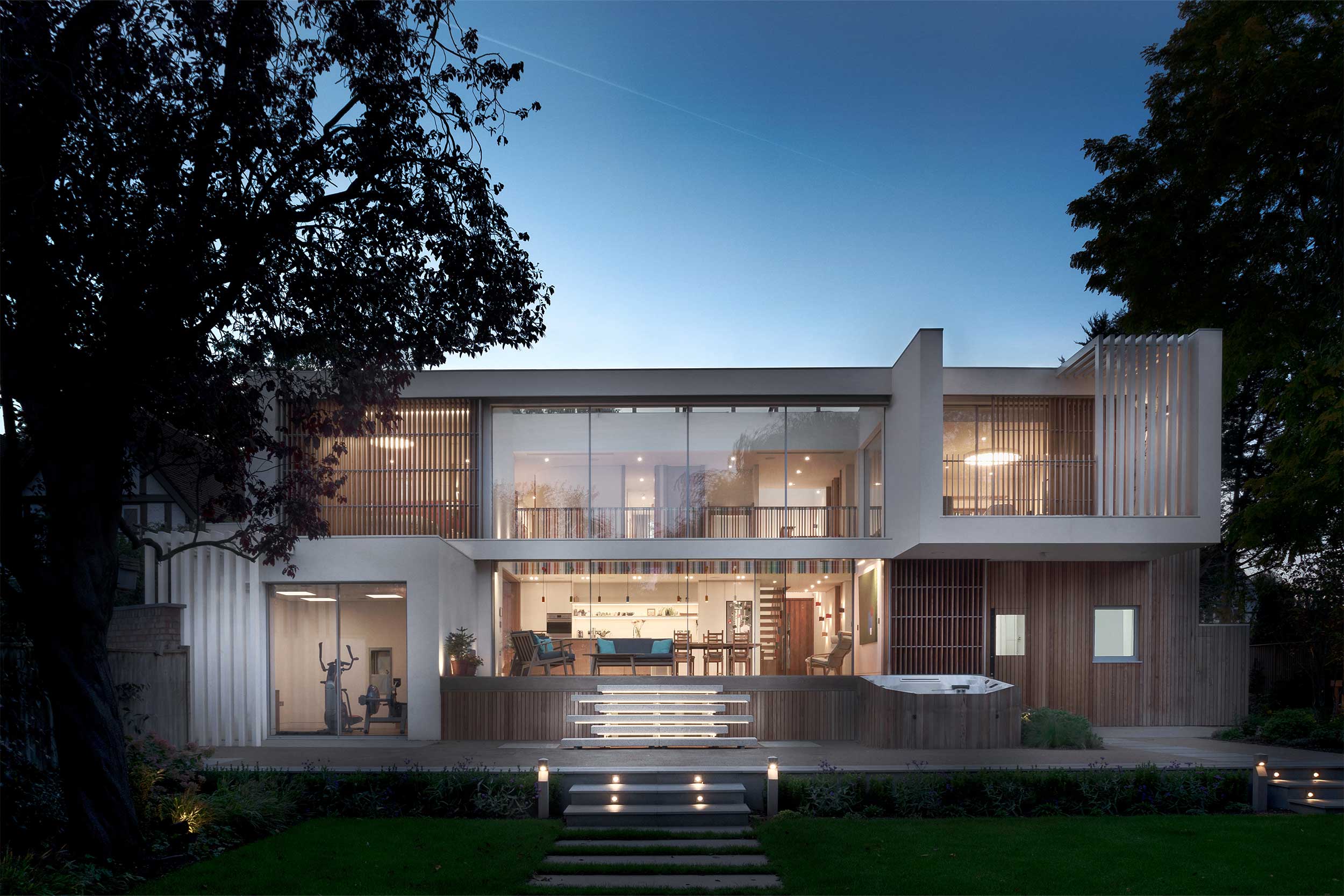
“Power is provided by a water-source heat pump, which supplies the underfloor heating and cooling system. Gordon is so confident in this kit that he removed the house’s gas meter and returned it to the power company.”
“The house is designed to be ready for long, hot, dry summers,” Gordon says.
Power is provided by a water-source heat pump, which supplies the underfloor heating and cooling system. Gordon is so confident in this piece of kit that he removed the house’s gas meter and has returned it to the power company. Solar PV panels provide electricity, although limitations in storage means the house remains hooked up to the grid to cover any shortages.
The house is also heavy on smart features. The security system enables Gordon and Helen to keep an eye on the house when they are away, and lets guests and workmen in by setting up a one-time PIN code for them to use to get into the house.
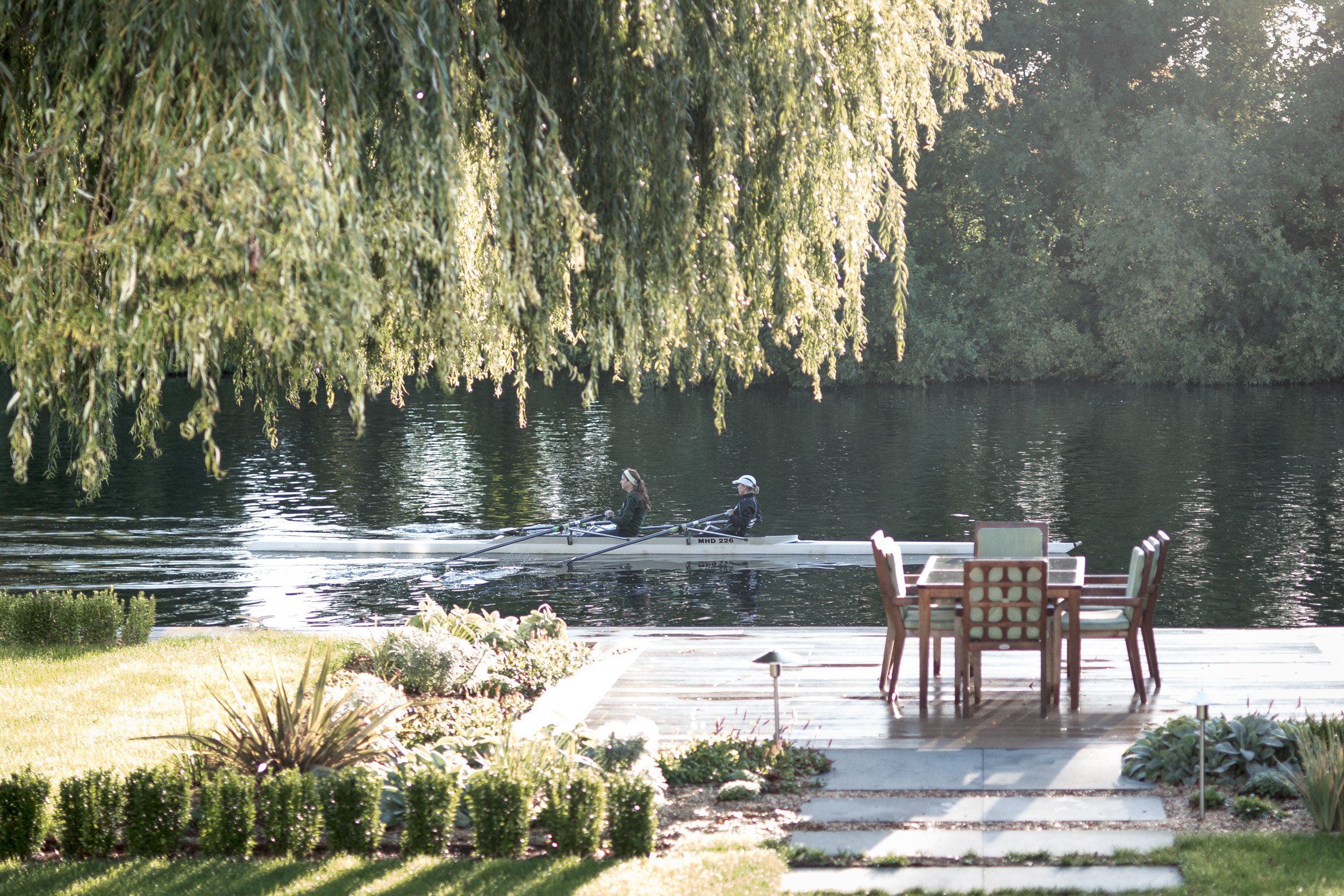
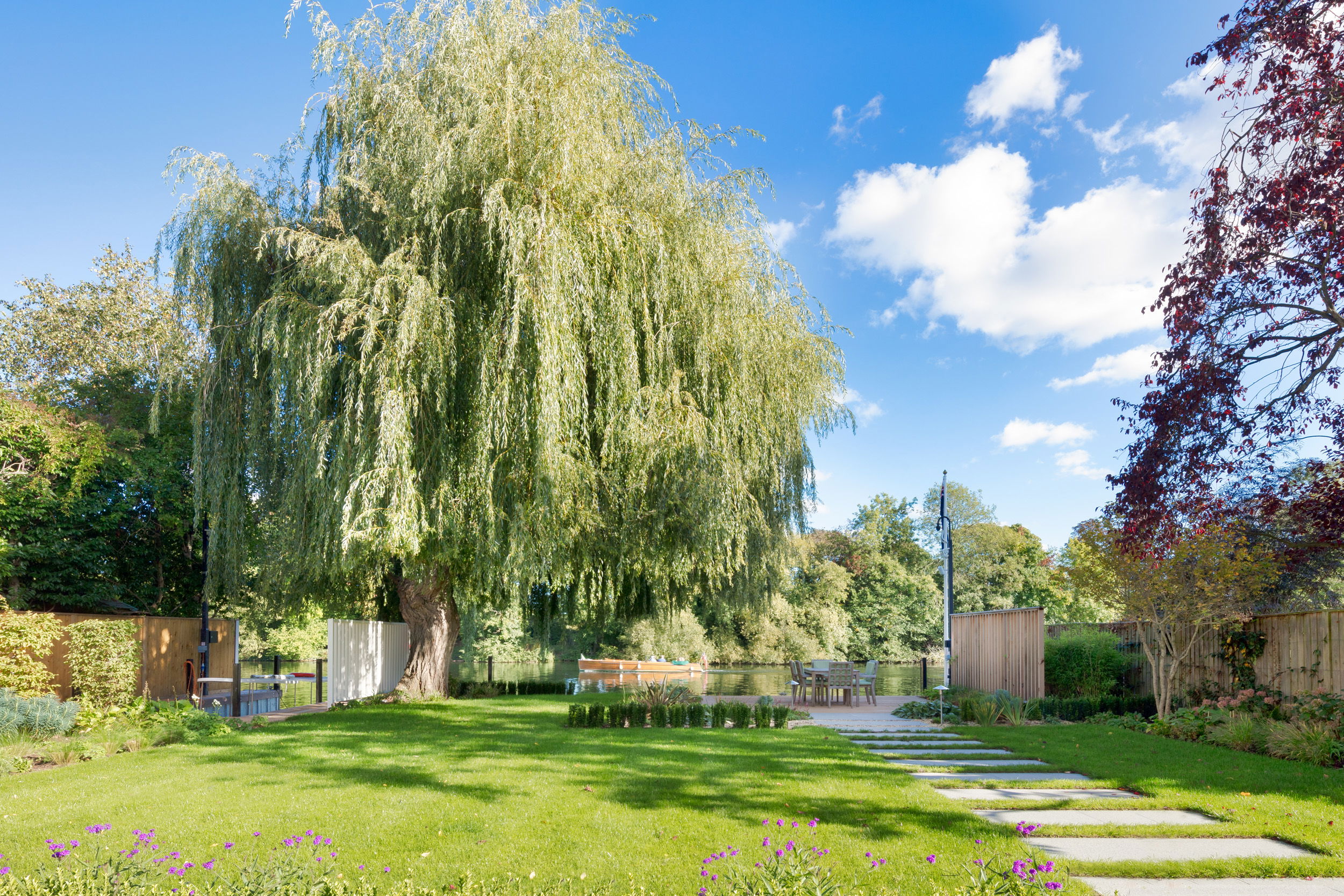
“While some of its features are cutting edge and complex, others are so beautifully simple you can’t imagine why everyone doesn’t do it. The doors… have flat magnetic latches in place of traditional metal latch bolts. That way you don’t walk past and end up tearing your shirt on the door, Gordon says.”
The touchpads that control everything from the shutters to the heating have buttons marked “hot”, which tells the system that the house is getting too warm and prompts it to close the shutters and blinds on the skylights, draw the curtains and activate the cooling system. The “cooking” button, meanwhile, lights up the kitchen and turns on the extractor.
This kind of bespoke attention to detail doesn’t come cheap. Building the house cost £2.5 million. But, thanks to its prime location and the race for space during the pandemic, Gordon believes it is worth “a little bit more” than he spent on it.
And while some of its features are cutting edge and complex, others are so beautifully simple you can’t imagine why everyone doesn’t do it. The doors, for example, have flat magnetic latches in place of traditional metal latch bolts. “That way you don’t walk past and end up tearing your shirt on the door,” Gordon says.
Photography by Martin Gardner.